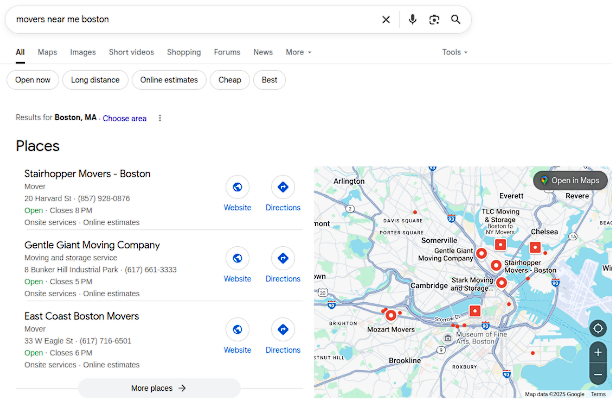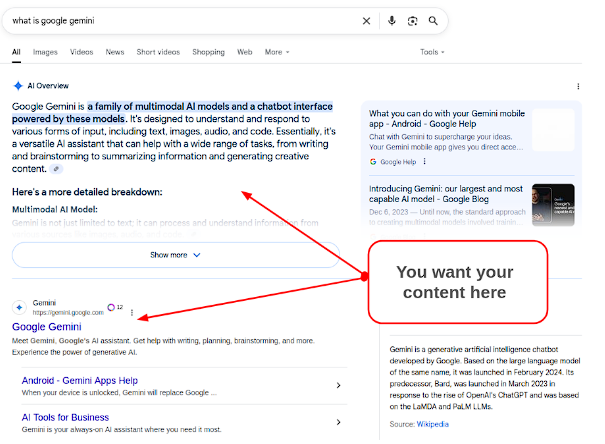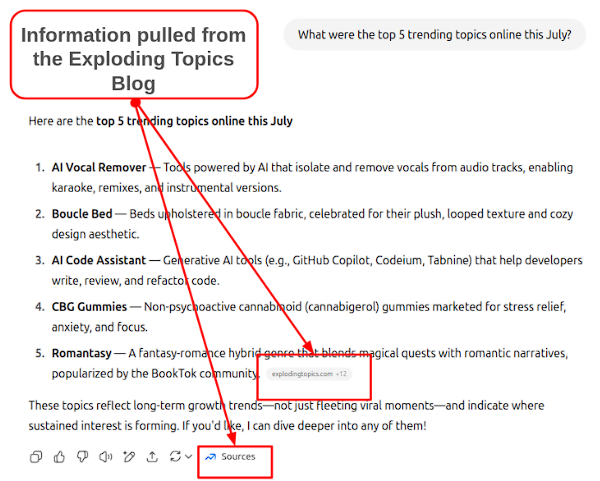Not too long ago, good SEO practices and well-designed ad campaigns were enough to put your brand at the top of Google’s SERP. But this is no longer true.
AI tools like ChatGPT, Gemini, and Perplexity are shaping how people discover content right under our eyes. With over 400 million weekly active users on ChatGPT alone, more people turn to AI for everything from legal advice to product recommendations.
As such, you face a new challenge: ensuring your brand and content are cited, not just ranked. Welcome to the world of Generative Engine Optimization (GEO), where traditional SEO alone won’t cut it, especially when competing with traditional search results.
If you’re hearing about GEO here for the first time, welcome! Of course, you’re just as welcome if you’re familiar with GEO but don’t quite grasp the concept; understanding how SEO enhances traditional search is key. We’ll take a look at these technologies and show you, in black and white, what it means to optimize your content in the age of AI.
Let’s get into it.
GEO vs SEO Compared: Strategies for Modern Search Rankings
In the evolving digital ecosystem, SEOvsGEO has become a key discussion point for marketers and content strategists. Ground your strategy in market context with emerging shifts in work and commerce. These patterns clarify how AI-driven discovery is reshaping demand. As the internet shifts toward ai-powered search engines, understanding how geo and seo differ is essential for staying competitive. While traditional seo techniques aim to improve visibility on search engine results pages, geo is designed for the search generative experience powered by generative AI and ai-driven search engines
Search engine results from traditional search engines and ai-driven systems now vary widely, requiring new strategies. SEO focuses on keyword optimization, backlinks, and technical SEO, whereas geo prioritizes context, entities, and relevance to content for ai-driven search. As google’s search generative experience expands, seo vs geo is no longer just a trend—it’s a shift in how search engine algorithms interpret data.
Key Differences Between SEO and GEO
- SEO remains crucial for traditional search engine optimization, especially in targeting platforms like Google and Bing.
- GEO focuses on creating content for AI and uses ai systems to match intent behind search queries, not just keywords.
- Unlike traditional seo, geo uses advanced AI and entity optimization to answer complex questions using ai overviews like Google AI Overviews.
- SEOvsGEO means deciding whether your strategy targets traditional search engine results or optimizes for the ai-powered search future.
- GEO ensures your content aligns with ai search optimization, adapting to generative search trends and citation optimization needs.
Why GEO Is Rising Alongside Traditional SEO
As ai-powered search engines like Google and Bing roll out ai search features, geo strategies have become vital. GEO tools help brands adapt content for ai-driven search engines, improving ranking in search engine results not by traditional means, but by aligning with how AI systems now understand user intent.
- Geo requires a deep understanding of user behavior and the power of generative AI.
- GEO offers better visibility in AI SEO contexts where generative engine optimization is needed.
- Implementing GEO means creating content for both SEO and GEO simultaneously.
- While SEO remains effective, GEO success hinges on the ability to use generative AI for dynamic responses.
- Whereas GEO adapts content to evolving ai search behavior, traditional SEO methods still focus on ranking through SEO tool techniques.
How to Use Both GEO and SEO Together
Marketers don’t need to replace SEO with GEO—instead, blending both ensures broader reach across traditional search engine results and ai search platforms.
- Combine seo campaigns with geo content to maximize exposure.
- Leverage seo experts to manage technical SEO and seo metrics, while deploying geo tools for AI search optimization.
- Ensure your content aligns with search engine algorithms and also satisfies answer engine expectations.
- Focus on SEO principles for site structure while adapting messaging for AI systems.
- Measure SEO success using traffic and engine results pages by optimizing both formats.
Ultimately, the SEOvsGEO conversation is less about SEO vs GEO, and more about integration. As seo efforts continue to target traditional search engines, geo strategies expand reach by tapping into AI-driven search. Together, they form a hybrid path toward holistic search engine results performance.
Why SEO Still Matters
Despite the hype surrounding generative AI and GEO, Search Engine Optimization (SEO) isn’t going anywhere as long as people continue to use traditional search engines like Google or Bing.
Currently, Google maintains a 79% market share for desktop search engines and a 95.5% market share for mobile search engines. Plus, even though AI delivers more personalized results, well-established search engines that have done the work of crawling and organizing the data are in the lead.

Source: https://www.statista.com
Not to mention that anyone who has ever worked in digital marketing or has run a campaign knows that SEO delivers results. Just ask Adrian Iorga, Stairhopper Movers’ founder and president. He is a strong believer in the power of search engine optimization, especially when it comes to local businesses.
His team used local SEO techniques to attract high-intent searchers looking for moving help in specific areas:
“We noticed that customers typing ‘movers near me’ were bypassing ads and clicking on the top organic results. After optimizing our location pages and local listings, we saw a 22% increase in organic leads in just three months.”

Source: Google search
That’s the power of SEO done right: sustainable, targeted visibility that drives action.
So yes, SEO is still essential. But as search engines evolve into answer engines, relying on SEO alone may leave you behind.
What Is GEO and How It’s Changing the Game
If SEO helps your content rank on search engines, GEO (Generative Engine Optimization) helps it get quoted by AI.
Since more people are using platforms like Perplexity, Gemini, or ChatGPT to get their information, the goalposts have shifted. It’s no longer just about appearing on top of Google’s SERP; nowadays, you also have to get AI to pull your content into its answers and reference your brand as a trustworthy source.
Take Google’s Gemini as an example. This is the engine behind that bit of AI-generated text (the so-called AI Overview) that shows up at the top of most searches nowadays.

Source: Google search
Its job is to generate an original response to your query by synthesizing information from multiple sources and presenting it in a conversational, summary-style format. Immediately below it, you have the traditional list of links retrieved based on traditional SEO practices. You want your content to show up in both of these sections.
The tricky part is that AI-generated answers use information from the top 30 search results 80% of the time, but only include clickable links in about 25% of cases. That means you can’t rely solely on backlinks or ranking; you need to write in a way that LLMs recognize and trust.
Data shows that AI favors content that’s concise, citation-ready, well-formatted, and comes from domain-trusted sources.
Beatus Hoang, a Senior Growth Manager at Exploding Topics, used his experience to test out this theory, and the results were quite impressive.
“Once we began restructuring our posts, adding clear takeaways, bullet-point summaries, and referencing data sources directly, we started seeing our trend reports being cited in ChatGPT answers. So, it wasn’t about ranking higher; it was about becoming quotable.”

Source: ChatGPT
In short, GEO is about earning the AI’s attention. Your content must become a go-to source that AI engines summarize, paraphrase, or directly quote when users ask questions.
Key Differences Between SEO and GEO
SEO and GEO are not exactly different; they’re like branches of the same tree. GEO relies on SEO best practices, such as clear headings, structured formatting, factual accuracy, and trustworthy domains to identify the best sources for a reply.
You need both to increase visibility, but it’s important to understand the differences as well.
Let’s break it down:
Audience Targeting
- SEO targets human behavior and intent through keywords, search trends, and user experience.
- GEO targets LLM behavior: how AI models consume, digest, and present information.
This aspect is important because it allows smaller companies to gain a competitive advantage.
Kathryn MacDonell, CEO of Trilby Misso Lawyers, showed us that you don’t need to rank #1 on Google for AI tools to notice your content. Her firm was quick to embrace AI and made it a priority to make their blog posts easy for AI to read and reference.
“Our blog wasn’t ranking #1 on Google, but it was being cited directly by generative AI platforms when people asked about claims for work- or car-related accidents. That changed how we approached content completely.”
Optimization Techniques
- SEO relies on metadata, keyword strategy, alt text, site speed, mobile responsiveness, and link building.
- GEO relies on language clarity, structured content (such as FAQs and bullet points), citations, and an authoritative tone.
In short, SEO gets you found. GEO gets you featured. Both matter, but they speak different languages — one to search engines, the other to AI.
Traffic Flow
- SEO drives clicks and pageviews by bringing users to your website.
- GEO often bypasses your site entirely as users get their answers in the AI interface.
Sean Shapiro, one of the Managing Partners at Axia Advisors, saw the impact while testing GEO content for one of his clients:
“We created a knowledge base on common roofing problems, backed by case studies. Within weeks, AI tools began referencing our client’s advice, even though traffic didn’t spike dramatically. More branded searches were coming in, which showed us that people remembered the name from AI-generated answers.”
Measurement and ROI
- SEO ROI is easier to track through metrics such as traffic, rankings, bounce rate, and conversion.
- GEO ROI is still evolving. For now, you can focus on citations in AI tools, branded queries, and engagement in AI chat contexts.
This doesn’t mean GEO is useless for conversions; it just requires a different KPI. The technology is advancing rapidly, so it will take a bit longer for us to understand every aspect of it fully.
SEO + GEO = The Modern Content Strategy
SEO and GEO are not competing strategies, but rather two complementary approaches to optimization. You still need evergreen content designed for traditional search engines, but you should also make sure that generative engines find it interesting.
In plain terms, these two strategies can amplify your visibility across both traditional and generative platforms.
How to Merge SEO and GEO in Practice
Here’s what a hybrid strategy looks like:
| SEO Best Practice | GEO Enhancement |
| Optimize meta titles and descriptions | Add clear section headings and summaries |
| Focus on keywords and search intent | Use concise, factual language that’s easy for AI to parse |
| Build backlinks and domain authority | Include internal citations and expert quotes to boost credibility |
| Ensure mobile responsiveness and site speed | Structure content with lists, FAQs, and bullet points |
You can use this blended approach to rank well in traditional search while also being cited or summarized by AI assistants. As a result, your brand recall will increase, even when users don’t click through your content.
Will this strategy work for everyone?
It all depends on your approach and goals. Let’s take a shop like Tuuli as an example. The owner, Peter Čuček, shared his trials and tribulations with combining SEO and GEO:
“We’ve always relied on SEO to bring in organic traffic, but it’s getting harder to stand out. GEO felt like the next step, but it’s not a plug-and-play solution (at least for now). We had to rethink how we present our product info, reviews, and guides so AI could actually ‘understand’ and use them. It’s been a learning curve, but when done right, the payoff is more visibility in places we never showed up before.”
Mistakes and Ethical Considerations of Generative Engine Optimization
Right now, almost everyone is rushing to get on the AI train. But we and other experts in a wide range of fields advise caution.
For instance, we heard from the CEO of Your Doctors Online, Raihan Masroor: “In fields like healthcare, finance, or law, information visibility is paramount, and not for financial gains. People deserve to find accurate, human answers to serious problems, not just AI-generated noise. That’s why making credible, expert-backed content easy to find is more important than ever.”
Other experts warn us about the risk of creating content for bots, not humans. Some marketers are already stuffing their content with robotic formatting (like endless bullet points and pseudo-FAQs). This can make your writing dry and unhelpful to real people.
Plus, not everyone does their due diligence when it comes to fact-checking. AI tools love well-cited, authoritative content, but if your facts are outdated, misleading, or pulled from questionable sources, it will hurt your credibility with users.
Then, there’s the well-known fact that generative engines are not the best at citing sources (if they do it at all). If your content is being summarized by an AI assistant without attribution, is that fair? Is it helping or hurting your brand?
Wrap Up
SEO and GEO aren’t rivals. They’re tools in the same box, and yes, you need both.
SEO keeps your content discoverable on Google. GEO makes it understandable and quotable by AI. One speaks to search engines, the other to generative models. And both speak to your audience through different channels.
If you want to boost visibility and reach, it’s time to combine the traditional with the modern!

